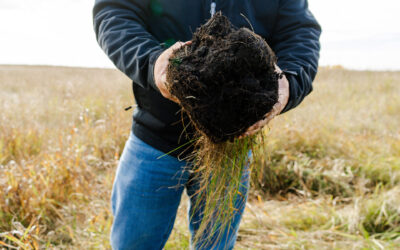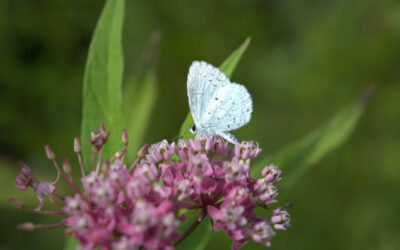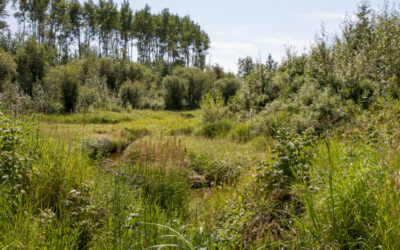Producing ecosystem services on a fifth-generation farm in Brazeau County, Alberta
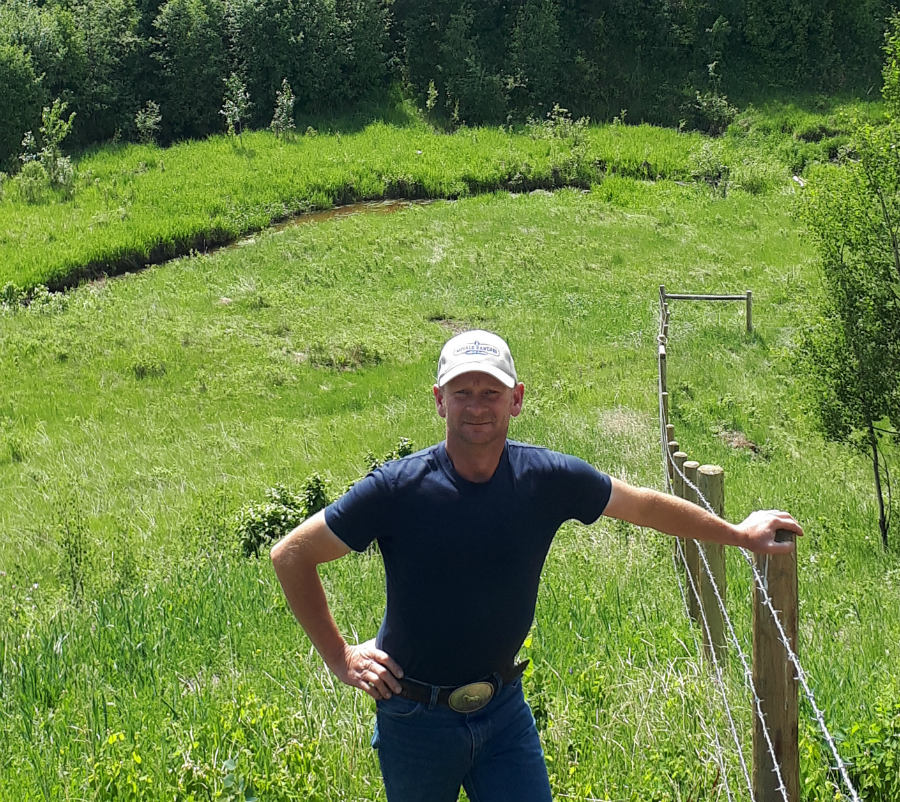
“I am very proud to be part of ALUS. I like that the program calls on those who know the land better than anyone else to work with nature and produce ecosystem services that truly have an impact.” -ALUS Brazeau PAC Chair Duane Movald, who, along with his parents, run a fifth-generation family farm west of Breton, Alberta.
2021 Dave Reid Award recipient and ALUS Brazeau PAC Chair Duane Movald and his parents run a fifth-generation family farm on 1,900 acres west of Breton, Alberta. They raise purebred Simmental and commercial cattle, grow forages and cereals, and produce ecosystem services through ALUS.
Enthusiastic members of the ALUS Brazeau program since 2017, the Movalds have enrolled 25 acres into ALUS so far, mainly for riparian buffer projects.
“I am very proud to be part of ALUS,” says Duane Movald. “I like that the program calls on those who know the land better than anyone else to work with nature and produce ecosystem services that truly have an impact.”
The first of many ALUS projects at Movald Farm was a wildlife-friendly cattle fence established along a wetland. By keeping the cattle out of the wetland where they used to drink, this project keeps the water clean, protects the banks from damage by the cattle’s hooves, improves riparian habitat and increases biodiversity on their land. All of these are all important ecosystem services.
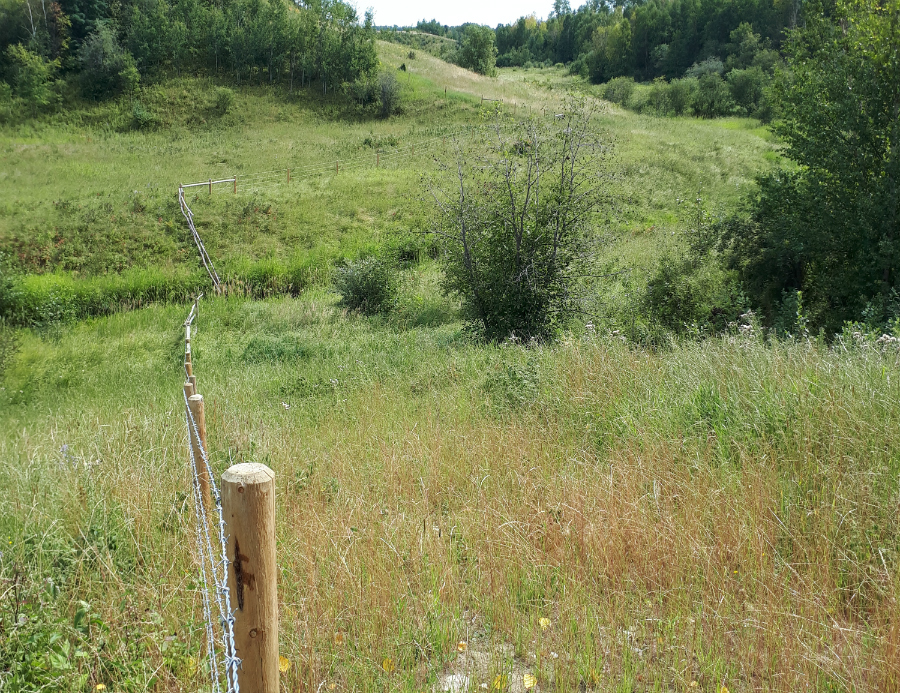
The first of many ALUS projects at Movald Farm, this wildlife-friendly cattle fence, established in 2017, serves to keep cattle out of a wetland to keep the water clean, while also protecting the bank to improve biodiversity, all important ecosystem services.
Vegetation has been quick to re-establish along this ALUS project,. Sedges and grasses started to fill in along the riparian area of the watercourse in early summer. This vegetation helps to slow down erosion and regulate water flow.
Soon, Saskatoon berry shrubs and hazelnut trees grew in, which improve bank stabilization and enhance habitat for local wildlife. Deep-rooted native species are now helping to stabilize the bank, while also providing other ecosystem services, like carbon sequestration, water filtration and wildlife habitat.
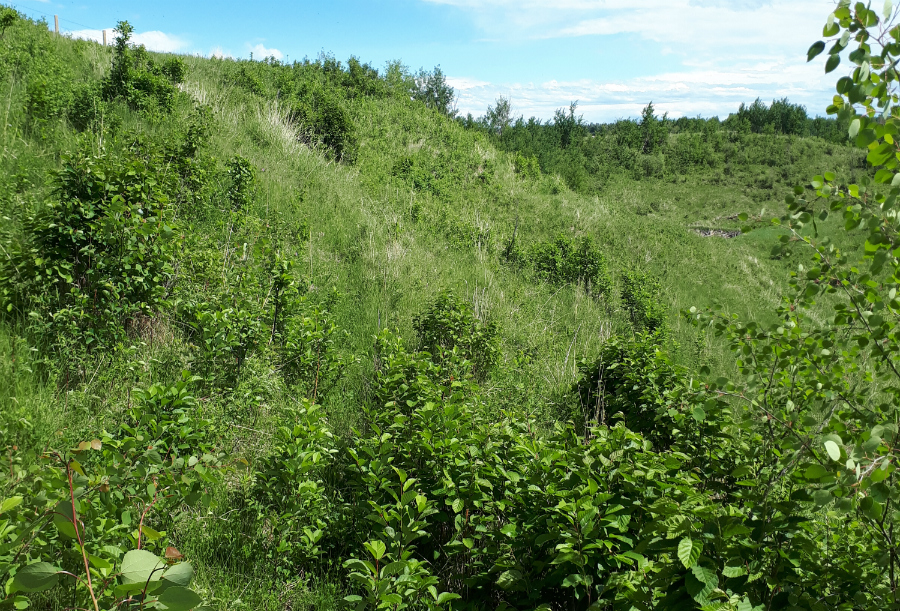
Looking east along the bank of the wetland, Saskatoon berry shrubs and hazelnut trees are improving bank stabilization and creating enhanced habitat for local wildlife.
Established in the dead of winter, the project started producing evident benefits within the first year.
“We can already see a difference, with more birds and pollinators, less erosion, cleaner water and just a healthier environment all around,” says Movald.
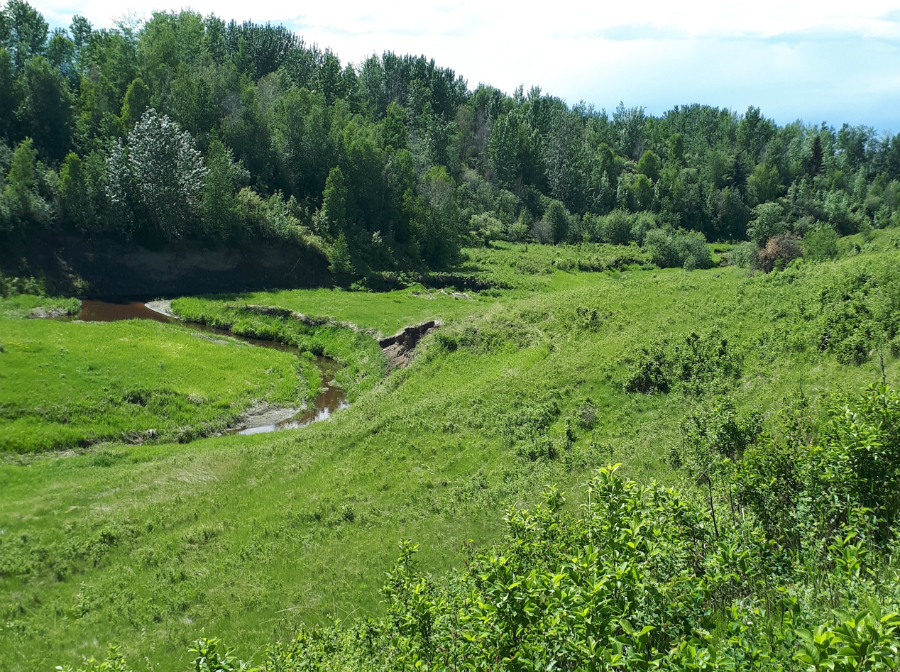
Looking west along the northern bank of the Movald’s ALUS project, new vegetation, including trees and shrubs, can already be seen filling in the riparian area. Their roots are helping to stabilize the bank while the vegetation itself provides other ecosystem services like carbon sequestration, wildlife habitat, and water filtration.
This ALUS projects was recently highlighted during a two-day riparian management course organized by Brazeau County, the Agroforestry and Woodlot Extension Society (AWES) and Cows and Fish.
“ALUS gets results. For the dollars spent, I think ALUS gives the greatest returns back to society,” says Movald. “It’s just beneficial for everyone, now and into the future.”
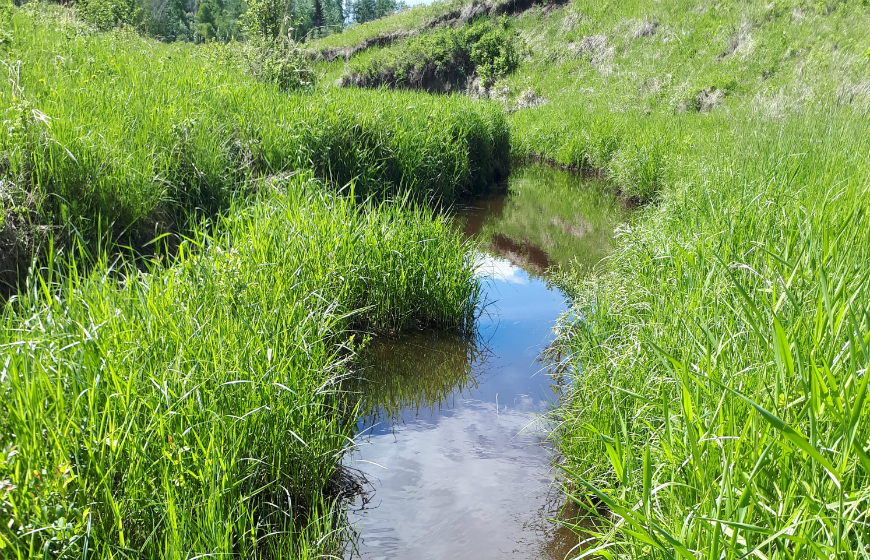
Since the Movalds implemented their ALUS project, additional sedges and grasses are beginning to fill in along the watercourse. The vegetation is helping to slow down erosion and regulate water flow.

